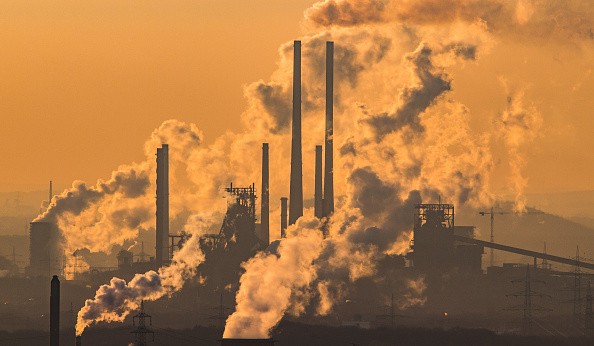Carbon dioxide emissions are the major driver of climate change, but they're not just one. Other greenhouse gases include nitrous oxide, water vapor, methane, fluorinated gases (which include hydrofluorocarbons, perfluorocarbons, sulfur hexafluoride, and nitrogen trifluoride).
While it's hard to compute all greenhouse gas emissions, carbon dioxide emissions data provides a more simple way to understand the dangers of their impact. This list of the top 5 countries with the highest carbon dioxide emissions depends on the most recent data (2019) of Global Carbon Project and analysis of OurWorldData.org. All units are metric tons.

China - 10.17 Billion Tons
While China is the head of global carbon emissions by far, its population is also very large that its per-capita numbers are truly below that of many other countries (there are around 50 countries that have higher per-capital carbon emissions). It's also worth making consideration that China produces and ships several products that are used by the rest of the world. China's emission comes mainly from its numerous coal-burning power plants, which power its factories and supply electricity to people's homes and to industries
United States - 5.28 Billion Tons
On the per-capita use of CO2, U.S. is at number 12 but since it has a larger population compared to other countries, it's among the leading emitters. That joining of a large population and every individual making use of ample CO2 indicates that the U.S. has a great impact on climate change compared to many other countries.
India - 2.62 Billion Tons
India is at the top of this list because of its large population, just like China, although per-capita use is lesser than in many other countries. The contribution of India to CO2 compared to the United States has actually only scaled up in the last 30 years, meanwhile, that of the United States for about 120 years has been high and increasing.
Russia - 1.68 Billion Tons
Russia is a large country that makes use of a mix of oil, coal, and gas to generate electricity, mainly to heat the homes of people and run its industry. Fugitive emission is its second-largest source of CO2 emission. Those come from the drilling of oil and gas, and also leaky pipes conveying fossil fuels. The country has decreased its reliance on coal and oil and boosted its use of natural gas since the 1990s.

Japan - 1.11 Billion Tons
Carbon emissions of Japan since 2013 have been on a remarkable downward trend, declining in 2013 from 1.31 billion tons of CO2 to 1.11 billion tons in 2019. The emissions come mainly from the country's direct usage of fossil fuels for its closely crowded population concentrated in cities, and some manufacturing, although since Japan is an island nation, it also imports quite so much from other countries.
For more news, updates about carbon emissions and similar topics don't forget to follow Nature World News!
© 2025 NatureWorldNews.com All rights reserved. Do not reproduce without permission.





